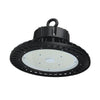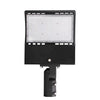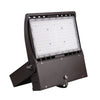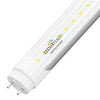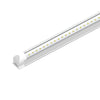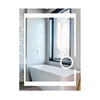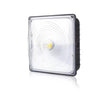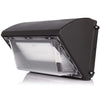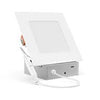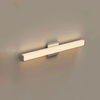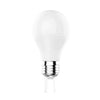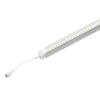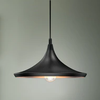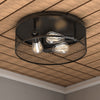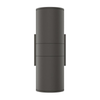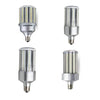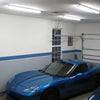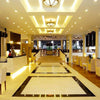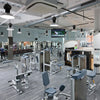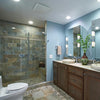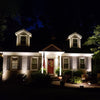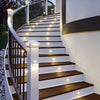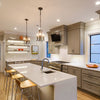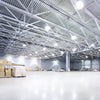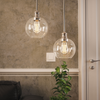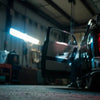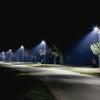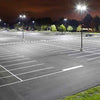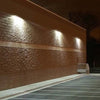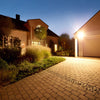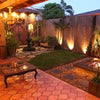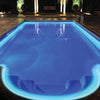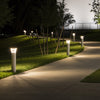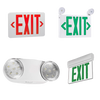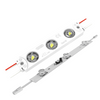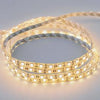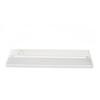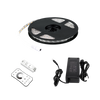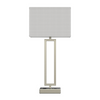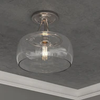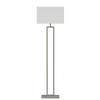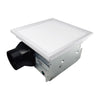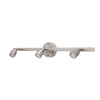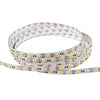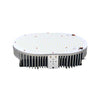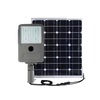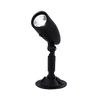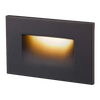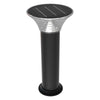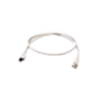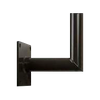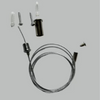High Bay LED Lights Best Buyer's Guide 2024
High-bay LED lights have emerged as the go-to lighting solution for commercial projects, offering many benefits over traditional lighting options. These energy-efficient fixtures revolutionize how businesses illuminate their spaces, from warehouses to manufacturing facilities. In this, you will explore why high-bay LED lights are perfect for commercial applications.
High-bay LED lights are powerful lighting fixtures designed for spaces with high ceilings, typically ranging from 15 to over 50 feet. They are commonly found in commercial and industrial settings where ample illumination is essential for productivity, safety, and visibility. High Bay LED Lights offer superior performance and efficiency, unlike conventional lighting options such as metal halide or fluorescent lights.
Advantages of High Bay Lights
1. Energy Efficiency:-One of the primary advantages of high-bay LED lights is their exceptional energy efficiency. LED technology allows these fixtures to convert more energy into visible light, resulting in significant energy savings for businesses. By reducing electricity consumption, high-bay LED lights help lower utility costs and contribute to sustainability efforts.
2. Longevity:-High-bay LED lights are renowned for their long lifespan, often lasting over 50,000 hours or more. This extended longevity translates to fewer maintenance requirements and reduced downtime for businesses. High-bay LED lights offer reliable performance over an extended period, minimizing maintenance expenses.
3. Enhanced Visibility and Safety:-High bay lights' superior brightness and clarity improve visibility and safety in commercial environments. Whether illuminating a warehouse floor or a manufacturing facility, these fixtures provide uniform illumination without glare or shadows, ensuring optimal visibility for workers and machinery. Improved visibility reduces the risk of accidents and enhances overall workplace safety.
Types of High Bay LED Lights
High Bay lights are available in various configurations to suit commercial applications. Some common types include:-
1. Traditional High Bay Lights:-Traditional high bay lights feature a classic design with a large, dome-shaped fixture. They are ideal for illuminating large open spaces such as warehouses and distribution centers.
2. Linear High Bay Lights:- Linear high bay LED lights are sleek and streamlined fixtures that provide uniform illumination across the space. They are well-suited for aisles, corridors, and narrow areas with limited space.
3. UFO High Bay Lights:- UFO high bay LED lights feature a compact and lightweight design with a circular shape resembling a UFO. They offer high lumen output and excellent heat dissipation, making them suitable for high-ceiling applications such as gymnasiums and sports arenas.

Choosing High Bay Lights? Consider These Factors
When selecting high bay lights for a commercial project, several factors should be considered, including:-
1. Ceiling Height:-The ceiling height will influence the type and wattage of high bay lights required to achieve adequate illumination. Taller ceilings may require fixtures with higher lumen output and wider beam angles to cover the space effectively.
2. Lumen Output and Wattage:-The lumen output of high bay lights determines the brightness of the illumination, while wattage indicates the amount of power consumed. Choosing fixtures with the appropriate lumen output and wattage ensures optimal lighting performance and energy efficiency.
3. Beam Angle and Distribution:-The beam angle of high bay lights determines the light spread across the space. Narrow beam angles are suitable for focused illumination, while wider beam angles are ideal for providing uniform coverage in large areas. Consider the layout and dimensions of the space when selecting the appropriate beam angle and distribution pattern.
Installation Process
The installation of high bay lights can be carried out by a professional electrician or as a DIY project, depending on the installation's complexity and the individual's expertise. However, certain safety precautions should be observed to ensure a safe and successful installation process regardless of the approach.
1. Professional vs. DIY Installation:- Professional installation is recommended for complex projects or requiring electrical expertise. Licensed electricians have the knowledge and experience to perform the installation safely and efficiently, minimizing the risk of errors or accidents. However, DIY enthusiasts may opt to install high-bay LED lights for simple installations, provided they follow manufacturer instructions and safety guidelines.
2. Safety Considerations:- Before beginning the installation process, turning off the power supply to the area where the lights will be installed is essential to prevent electrical shocks or accidents. Additionally, using appropriate tools and equipment, such as ladders and safety harnesses, can help prevent injuries and ensure a smooth installation.
3. Step-by-Step Process:- The installation process typically involves the following steps:-
- Planning the layout and placement of high bay lights.
- Mounting the fixtures securely to the ceiling using appropriate hardware.
- Wiring the lights according to the manufacturer's instructions and local building codes.
- Testing the lights to ensure proper functionality and performance.
Maintenance and Care
Regular maintenance and care are essential to ensure optimal performance and longevity of high-bay LED lights. Here are some tips for maintaining your high bay lights:-
1. Cleaning and Inspection Tips:- Regularly clean the fixtures and lenses to remove dust, dirt, and debris that may accumulate over time.
2. Replacing Bulbs and Components:- If a bulb or component fails, replace it with a compatible replacement from the same manufacturer to maintain consistency and performance.

Cost Considerations
While the initial investment in high bay lights may be higher than traditional lighting options, the long-term savings and benefits far outweigh the upfront costs. Factors to consider when evaluating the cost-effectiveness of high-bay LED lights include:-
1. Initial Investment vs. Long-Term Savings:- Although high-bay LED lights may have a higher initial cost than traditional lighting options, their energy efficiency and long lifespan result in significant savings over time. Businesses can recoup their investment through reduced energy bills, lower maintenance expenses, and improved productivity.
2. Return on Investment (ROI):- Calculating the ROI of high bay lights involves comparing the upfront installation cost with the anticipated savings and benefits over the lifespan of the fixtures. Factors such as energy savings, maintenance costs, and rebates or incentives should be considered to determine the overall ROI of transitioning to LED lighting.
Applications of High Bay Lights
High-bay LED lights are versatile fixtures suitable for various commercial applications:-
1. Warehouses:- High bay lights illuminate large warehouses and distribution centers, providing ample brightness and visibility for inventory management, picking operations, and loading docks.
2. Manufacturing Facilities:- High-bay LED lights ensure optimal visibility for production processes, quality control inspections, and worker safety. The bright and uniform illumination improves productivity and reduces the risk of errors or accidents.
3. Gymnasiums and Sports Arenas:- High-bay LED lights are commonly used in gymnasiums and sports arenas to provide bright and uniform lighting for indoor sports activities, events, and competitions. The high-quality illumination enhances visibility for players and spectators, creating a safe and enjoyable environment.
Innovations and Trends
As technology advances, high-bay LED lights evolve with innovative features and functionalities. Some emerging trends in high-bay LED lighting include:-
1. Smart Lighting Features:- Integration with smart lighting systems allows businesses to remotely control and automate their lighting infrastructure, adjust brightness levels, schedule operations, and monitor energy consumption from a centralized platform.
2. Integration with Building Management Systems:- High bay lights can be integrated with building management systems (BMS) to optimize energy usage, enhance occupant comfort, and improve operational efficiency. Businesses can achieve greater synergy and performance by connecting lighting controls to HVAC, security, and other building systems.

